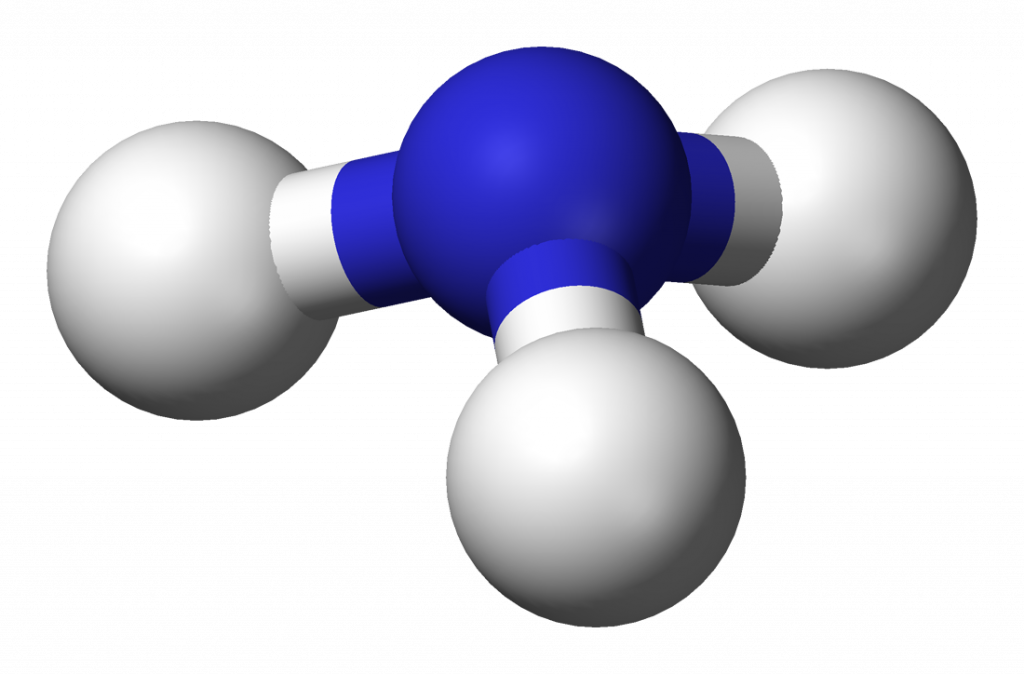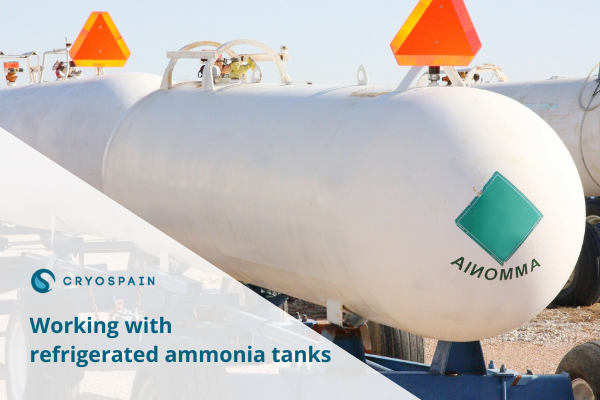Refrigerated ammonia tanks are a key element to many industries working with this increasingly prominent gas.
Around a hundred ammonia plants are expected to be built in the next decade around the globe, and experts forecast the global ammonia production to grow from around 235 million metric tons in 2019 to 290 million metric tons by 2030.
This expansion points towards a surge in the need for fitting refrigerated ammonia tanks that both protect the product and the surroundings in an efficient and secure manner.
What is NH3 and its uses
Ammonia (NH3) is colourless gas with a distinct, pungent odor composed of nitrogen and hydrogen. This compound occurs naturally (the human body makes it when breaking down protein from food) but it’s also a key component in manufacturing products across a wide array of industries, including its use as the starting material for nitrogen compounds.
Ammonia is useful for many different industries for various reasons:
- It’s the best hydrogen carrier apart from hydrogen itself. However, while transporting and storing liquid hydrogen is expensive, energy-intensive and inefficient (one litre of liquid hydrogen contains around 8MJ), ammonia can be stored in liquid state in tanks that are common for other technical gases and liquids, such as petroleum gas or LNG.
- Ammonia presents a good energy density, so that it can be combusted in fuel cells or engines with no carbon emissions. At a time when green energy is gaining traction, ammonia thus presents an alternative for energy systems that rely on ammonia but present no big technical handicaps.

How to store ammonia
Refrigerated ammonia tanks are a common and efficient way to store this compound. In its liquid form, ammonia is stored at -33ºC under atmospheric pressure. It can also be stored at ambient temperature under high pressure or in a semi-refrigerated state, at intermediate temperatures and pressure.
In any case, refrigerated ammonia tanks and those that are not under extreme temperatures must all undergo regular inspections, especially around welds.
You may like: The growth of the cryogenic market: how has the COVID-19 affected the sector?
NH3 applications in industry
Food industry and agriculture
Ammonia is the basic component for many common fertilizers, including ammonium nitrate fertilizers. In fact, around 80 – 90% of the ammonia used in the different industries is produced for fertilizers. Ammonia also plays a part in the production of pesticides.
Cleaning
Ammonium hydroxide is a common ingredient in household cleaning products, and is especially effective for eliminating difficult stains such as oils or grease, as well as glass cleaning. It is also used as heavy-duty cleaning power: One of many methods used to clean industrial plants and machinery; loosens caked-on dirt particles.
Textiles
The textile industry also employs ammonia in the manufacturing of synthetic fibres such as nylon, as well as other processes such as dyeing and scouring.
Metallurgy
Ammonia is used across different metallurgical processes: from being a source of atomic hydrogen for welding to the hardening of alloy sheets.
Energy
In an increasingly decarbonizated context and the transition to energies with no carbon emissions, ammonia can be used as fuel for power generation. Also, it’s becoming common for LNG tanks to convert to ammonia tanks, as these storage facilities can easily be adapted.
Other industrial uses
Ammonia also plays a key role in the manufacturing of several types of plastics, dyes, rubber, pulp, paper, pharmaceuticals and explosives (including TNT, nitroglycerin and nitrocellulose).
It’s also paramount as a refrigerant gas both for large industrial applications and smaller facilities. The wastewater and waste treatment also employ ammonia, while the beverage sector uses it as a stabilizer and a source of nitrogen.
Working with refrigerated ammonia tanks
If incorrectly stored, ammonia leaks can be the source of critical problems, including explosions due to its explosive mixture with air. Ammonia is also corrosive for skin and other organs, and toxic when ingested or inhaled.
In order to avoid these risks, refrigerated ammonia tanks must take a number of precautions:
- Tank walls must be insulated enough to avoid potential burstings or material stress, also warding off against potential thermal expansions.
- Ammonia must also be stored in fire-rated buildings properly conditioned for chemical storage. Besides, it’s usually recommended that the building stands apart from other occupied constructions, to minimize harm in case of emergency.
- Ammonia gas detectors must be installed in order to guarantee that leaks are quickly noticed and notified to the right people, so that a timely response can be coordinated.
As well as these precautions, there are at least two important international standards that address ammonia storage:
- 29 CFR OSHA 1910.111 – Storage and Handling of Anhydrous Ammonia
- 29 CFR OSHA 1910.109 – Explosives and Blasting Agents (Storage of Ammonium Nitrate section)
In any case, it’s crucial that companies that need to store ammonia rely on the right suppliers to provide for the appropriate solution for ammonia storage, including refrigerated ammonia tanks.
Keep reading: Refrigerated tanks: the perfect solution for storing gases
Cryospain is a cryogenic engineering company with more than 20 years of experience in designing, manufacturing and assembling refrigerated tanks. A global reference in cryogenic engineering, we have designed, manufactured and assembled tanks around the world.
Among our services, we are experts in the application in our designs and products of the international standards that regulate refrigerated ammonia tanks in particular, including API620 Design and Construction of Large, Welded, Low-Pressure Storage Tanks (a standard developed and published by the American Petroleum Institute) and EN14620 Design and manufacture of site built, vertical, cylindrical, flat-bottomed steel tanks for the storage of refrigerated, liquefied gases with operating temperatures between 0 °C and -165 °C.











 Contacte-nos
Contacte-nos